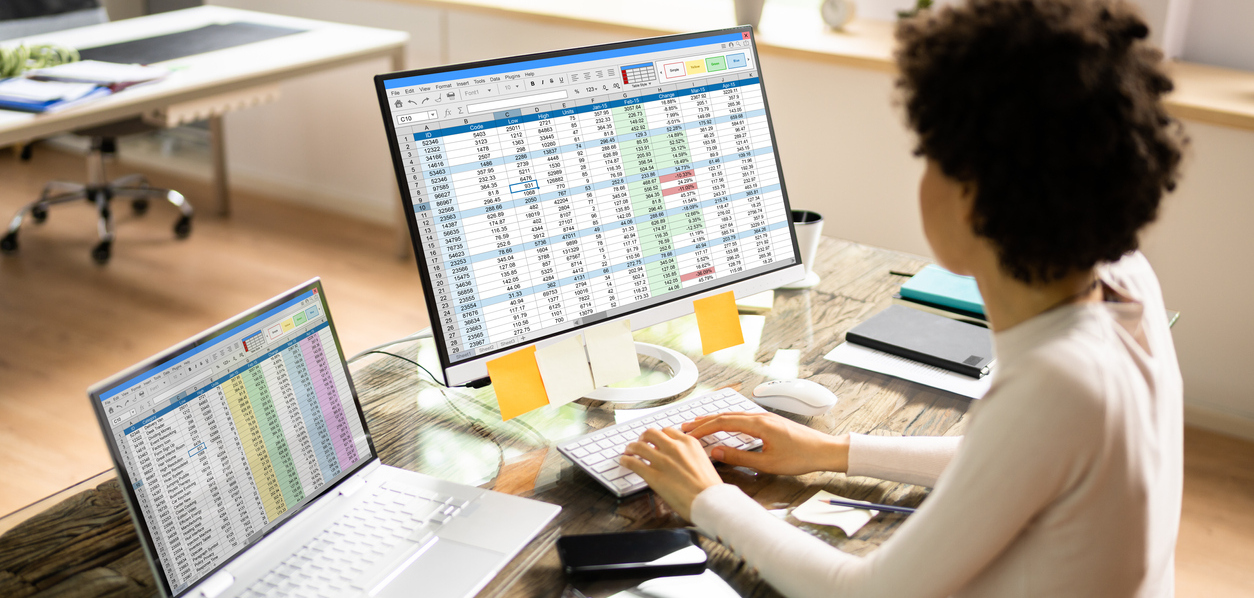The Ultimate Guide to GICs: Everything You Need to Know to Start Investing
In an ever-changing economy, where inflation and interest rates are high, few things are guaranteed. Many investors though are turning to Guaranteed Investment Certificates (GICs) as a risk-free place to grow their money.
GICs are a great investment tool for investors looking for a low-risk, but guaranteed way to protect the value of their investments.
If you don’t know much about GICs or are interested in learning more about how they work you're in the right place - keep reading for our ultimate guide to GICs.
What is a Guaranteed Investment Certificate?
A GIC or a Guaranteed Investment Certificate is an investment product that works like a special kind of deposit where you are guaranteed to get the amount you deposited back at the end of the term.
You can think of a GIC as an extra-high-interest savings account.
In general, the longer the term, the higher the interest you will earn. However, where things differ is with a high-interest savings account you may only be offered a basic rate of 1.5%, while a GIC may offer 5% or more.
Most GICs pay a fixed rate of interest for a set term, which can range from 30 days or up to 10 years, and the minimum amount you can typically invest is $500. Some GICs will offer variable interest rates, but regardless at the end of your term, you are paid back your full principal in addition to any interest still owning.
How do GICs work?
Generally speaking, by purchasing a GIC you’re basically lending money to a financial institution or bank. They agree that at the end of your term, they will pay you back plus interest.
GICs are generally considered to be safe because they follow these two protective measures:
- Financial institutions or banks that issue GICs are legally obligated to repay investors’ principal and interest
- If the financial institution or bank goes bankrupt, your bank account which may contain GICs is protected by the Canadian Deposit Insurance Corporate for up to $100,000. If your GIC is with a credit union note that they are members of the deposit insurance corporates of the province where they operate; see our deposit insurance article for more information
People think that withdrawing GICs before their maturity date will occur in a penalty, which is true depending on the type of GIC you are purchasing. For example, if you need to access your funds before the maturity date, you may want to consider purchasing cashable or redeemable GICs.
Features of GICs
Term length
All GICs have a predetermined term length, which can range from a few months to several years.
Generally speaking, the longer the term the higher the interest rate, but this may not always be the case, especially when market conditions are volatile. For example, in 2023 Canadian interest rates have been exceptionally high and have created a situation where the 1-2 year rates are higher than the 5-year rates. This is why it's important to check a variety of term lengths, even within the same institution, to determine how you can get the most value from your investments.
Interest Rates
Interest rates combined with term length make up your ROI calculation.
For example, investing $100,000 (your principal) in a 1-year GIC at a 5% interest rate means that at the end of your term, you've earned $500.
You may also come across an Annual Percentage Yield in many places. This is different from your typical interest rate because it factors in any compounding that happens during the year, giving you the "real rate of return".
Compounding Frequency
Compound interest is what happens when interest earned from a previous period is added back to your principle. This increases your balance and as a result, the amount of interest you will earn going forward. With compound interest, your savings and investment returns can grow exponentially as interest is being reinvested continuously.
Interest can be compounded on an annual, monthly, weekly, or daily frequency. Generally, the more regularly your interest is compounded, the faster your balance will grow.
Interest Payment Options
Rather than waiting until maturity, you may also have the option to get interest paid throughout your term.
For example, if your GIC compounds annually you may choose to wait until its maturity before you redeem your interest, or you take the option to have your interest paid out throughout your term. Let's say you invested $100,000 in a 1-year GIC at a 5% APY, your monthly interest payments are roughly $411 which you could pocket, re-invest, or use to free up some cash.
What are the Different Types of GICs
Non-Redeemable GICs/Non-Cashable GICs
A non-redeemable, or non-cashable GIC cannot be cashed in before its maturity date. This means that your funds are locked in for the specific term you have chosen. Most times, these types of GICs yield a higher return than cashable GICs. Non-cashable GICs are great for investors who can lock in their funds for some time, without needing to liquidate.
If you for some reason need to redeem this type of GIC, if the financial institution even allows it, it will come at a cost. The penalty could be on your principal or on the interest that you have earned.
Cashable GICs vs. Redeemable GICs
Cashable GICs
A cashable GIC often comes with a one-year term that can be cashed at any time after a 30 to 90-day waiting period without a penalty. The one-year terms act as a guideline rather than a firm date.
Redeemable GICs
A redeemable GIC typically has longer terms and often comes with terms of one year or more. Unlike cashable GICs, redeemable GICs don't come with waiting periods and they can be redeemed at any point throughout the term. Redeemable GICs also come with an early redemption rate which means that your interest rate for early withdrawal is subject to an early redemption schedule that affects how much interest can be earned on your deposit. In other words, the earlier you redeem your GIC, the lower your interest rate will be.
Both cashable GICs and redeemable GICs are good options for the investor who may need to access their funds earlier, or for some that are most risk averse, but generally speaking, if you may need to cash out earlier than a year you may be better off with the cashable GIC because of the early redemption schedule associated with redeemable GICs.
Fixed Rate vs. Variable Rate GICs
Fixed Rate GICs
Fixed rate GICs are by far the most well-known GIC products. They promise a defined amount of interest payable as specific during the term. For example, investing $100,000 in a 1-year fixed-rate GIC at 2% returns a $2,000 on top of the principal for a total of $102,000 at the end of the term.
Variable Rate GICs
On the other hand variable rate GICs, vary. This type of GIC is dependent on the fluctuating interest rate benchmark which is usually linked to the prime rate of the bank. This means that if rates go up, you can expect your ROI to also increase, but if it goes down then so does your ROI.
Equity or Market-Linked GICs
Equity or market-linked GICs offer a return based on the performance of an underlying stock market index. This type of GIC is typically non-redeemable, making the fine print important with this investment product, especially clauses around "extraordinary events".
With equity or market-linked GICs your rate of return is not determined until its maturity, meaning your return is not guaranteed except for your principle. If market performs well, your return will be good, but if the market doesn't perform well, you run the risk of seeing no return at all.
Foreign Exchange GICs
Foreign exchange GICs give investors access to the currency of the associated country while earning interest while invested. Foreign currency GICs are typically denominated in the country issuing the GIC, so for a Canadian GIC, it is denominated in Canadian dollars.
Investing in foreign exchange GICs is great for travellers, or for folks who follow both Canadian and U.S. dollars for example. With a foreign exchange GIC you can diversify your portfolio, preserve a higher purchasing power, and profit off of fluctuations in foreign currency values.
The Difference Between Registered and Non-Registered GIC
Registered GICs
In Canada, we have different types of savings accounts that can be registered with the federal government that you can use to grow your savings tax-free.
- Registered retirement savings plans (RRSPs).
- Tax-free savings accounts (TFSAs).
- Registered education savings plans (RESPs).
- Registered retirement income funds (RRIFs).
- Registered disability savings plans (RDSPs).
When you invest in a registered GIC, that means that the amount you’ve invested and the interest you earn are held in one of these tax-free accounts. This can be a great option if the reason you are purchasing a GIC fits within the limits of a registered account, as you will not need to pay tax on your investment income.
Non-registered GICs
A non-registered GIC tends to be more flexible regarding how and when you can withdraw your funds as they don’t need to adhere to the restrictions of a registered account. Registered accounts also have specified contribution limits which you need to account for when investing in a GIC.
The downside to non-registered GICs is that any money earned on them needs to be claimed as investment income and will be taxed accordingly.
When should you consider investing in a GIC?
GICs are simple, straightforward, and low-risk; these are their biggest advantages and a reason why they've surged in popularity recently. As interest rates rise, GICs offer investors a haven from volatile stock and bond markets.
While we can't tell you how to invest your money, we can say that GICs are a great option if your organization:
- Has a large purchase to make in the future, like a piece of equipment, and have the time to save up for the purchase
- Has just raised a round of funding, or is sitting on idle cash
- Has a lower risk tolerance, especially in times of high interest
How do GICs compare to other investments
Bonds vs GICs
A bond is an investment tool where an investor loans money to an entity for a period at a fixed interest rate. Issuers may include federal, provincial/state, or municipal governments or agencies, corporations, foreign governments, and private institutions. Typically, bonds are considered to be less risky than stocks because they provide a source of steady and predictable income in the form of interest.
Some of the main differences between a bond and a GIC is as follows:
- Liquidity: Bonds are more liquid than non-redeemable GICs, however, if you choose a redeemable or cashable GIC you may be offered similar liquidity options.
- Market Transparency: Because bonds are traded in the market prices are clear, but for GICs they are not. However, the lack of visibility into the GIC marketplace is exactly what Yield Exchange is solving.
- Risk: Bonds are typically higher risk than GICs because they are directly related to the market, but are still less risky than stocks.
- Steadier return: Because bonds are traded in the market, they are more likely to sell-off when times are more volatile, like for example interest rates rising, versus GICs are not.
Mutual funds vs GICs
A mutual fund is a basket of securities or a portfolio, stocks, bonds, or other investible assets, that is managed by a professional fund manager. Your money is pooled together with other investors and returns may consist of dividends and interest. However, the money you have invested is not guaranteed a minimum return, meaning your ROI is entirely dependent on how the mutual fund performs on the stock market.
While the differences between a mutual fund and GICs are similar to bonds and GICs, one key difference is for mutual funds you have to pay a management fee which will eat into your ROI.
But like everything else, choosing between a mutual fund or a GIC is entirely dependent on how much risk you are willing to take on.
If you aren’t comfortable with possibly losing your initial investment, a GIC that offers modest earnings is probably the better choice. With a mutual fund, you could lose money, but if the assets it holds outperform, you could earn far more than the interest paid out by even the most attractive GICs.
How to Purchase a GIC
Online or by phone
It's never been easier to by a GIC; you can go online or simply pick up the phone. Often times the process is the same, you'll have to open an investment account, select the type of GIC you want based on the posted rated, fill some forms, and you're on your way. Typically this is time-consuming, manual, and frustrating.
Another signficant disadvantage to this method is you have very little information about your options meaning you are not able to negoiate. Yield Exchange changes that; we give you direct access to over 20 financial institutions to negotiate your rates and get the most competitive rate.
In person
Booking an appointment in person is a great way to build a relationship with your financial institution and get more personalized support for your financial goals. This gives you more opportunity to speak to and work with a financial advisor to figure out the exact terms that work for you.
This is especially valuable for businesses or folks with larger investment amounts. When you are making a large deposit, it’s crucial that you spend some time not only negotiating, but shopping around to check for different rates.
Deposit brokerage
One of the biggest challenges with purchasing GICs is the lack of transparency from financial institutions; you don't know how their rates compare against others, and they don't give you the option to negotiate. This is time-consuming and frustrating; this is where deposit brokers come in.
A deposit broker is a financial professional who shops around for you and helps you build a portfolio. Typically they can provide investment advice, retirement and estate planning, life insurance, and mutual funds.
While a deposit broker is helpful they typically charge a lofty fee that can eat into your returns, it still takes time, and overall disrupts your rate shopping process because you're adding an additional person.
Yield Exchange
Yield Exchange is the new and better way to shop for rates.
Yield Exchange allows you to:
- Negotiate rates directly with the financial institution (we've partnered with over 20)
- Get the most competitive GIC rates across a variety of GIC products like non-redeemable, redeemable, and cashable
- Have better oversight into your investment process because everything is happening in one, central platform (yes, we're getting rid of the mass excel spreadsheets)
We're completely transforming the way organizations shop for rates. We're bringing the financial insitutions directly to you, simply tell them what you need, your term length, the type of GIC you're looking for, and watch them bid.
Learn more about the power of Yield Exchange and see for yourself how we're transforming the GIC marketplace.
Sign up for a free account today, seriously it's free.


